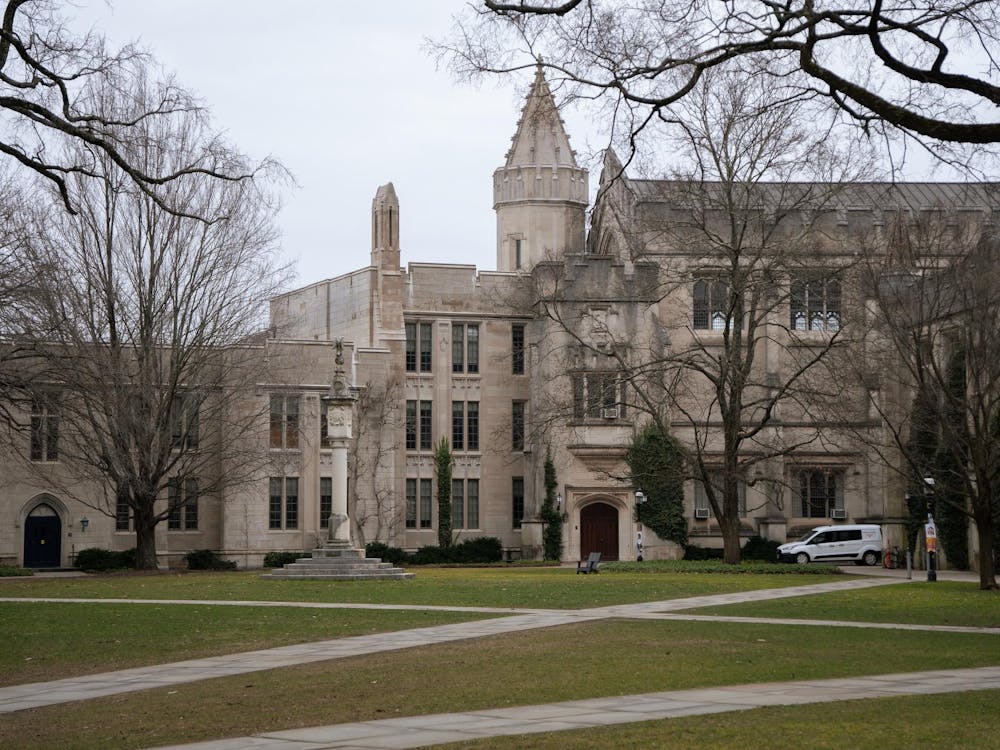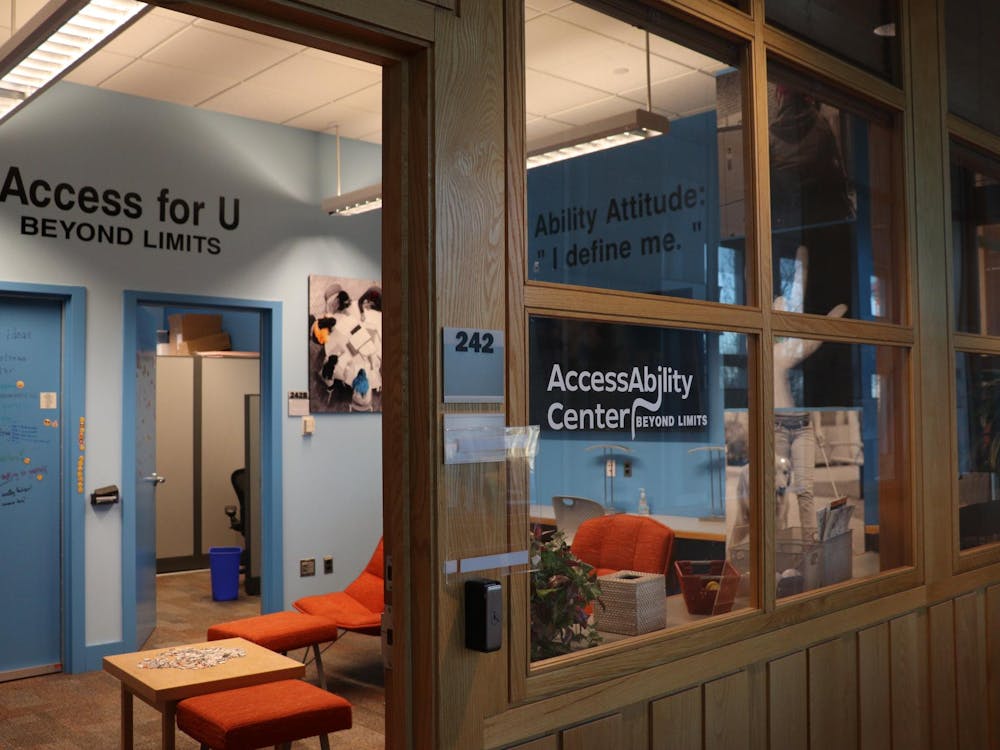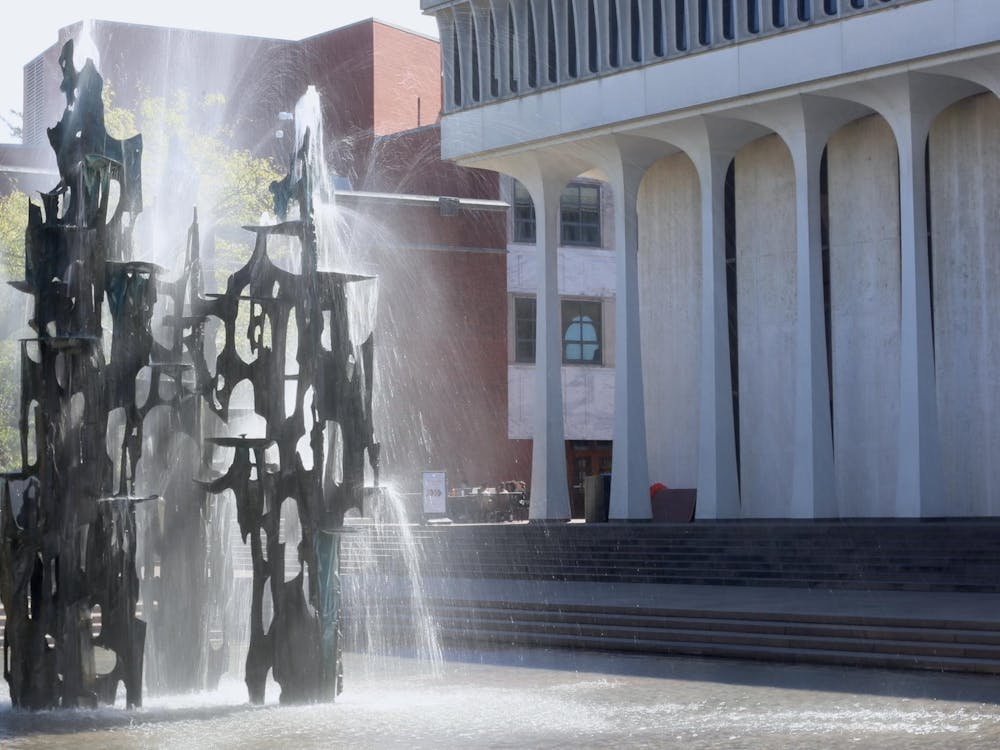The Declaration Day, which was held in McCosh Courtyard on Tuesday, did not contain a banner for African American Studies.
The African American studiesdepartment originated from the Program of African American studies created in the fall of 1969. In 2006, this was replaced by the Center for African American Studies, which has offered courses and an interdisciplinary AAS certificate program.
In 2015,the U. Board of Trustees officially approved a first-ever concentration in African American studies, allowing members of the Class of 2018 to be the first students in University history to major in African American studies.
The Declaration Day celebration was first organized last year as a collaborative project between the Office of the Dean of Undergraduate Students and the class of 2017, according to Deputy Dean of Undergraduate StudentsThomas Dunne.
Elena Tsemberis '18, one of the seven declared concentrators in African American studies, said the absence of an AAS banner at the Declaration Day event came as a complete surprise to her.
Tsemberis said that when the event initially began, several other banners had not yet arrived – including banners forSpanish and Portuguese, Psychology, Ecology and Evolutionary Biology and Neuroscience, which became a concentration for the first time in 2015. When a box of the remaining banners arrived, the AAS banner was nowhere to be found.
She added that she and the fellow future AAS concentrators asked Chance Fletcher '18, Class of 2018 president, about the banner's absence. According to Tsemberis, Fletcher explained that he had contacted the AAS department and had been informed that, because it was a new concentration, the ODUS had not yet had time to purchase a banner.
Fletcher deferred comment to ODUS, but noted in an email that ODUS is in charge of the banners and that the class government was confused about the absence of an AAS banner as well.
“I thought that was a valid response, but I know that myself and other students were upset because the fact that this department took from 1968 until now to be created and solidified was a reason that we could not have our declaration represented in the same way as the other students,” Tsemberis explained.
According Dunne, last year, ODUS had ordered banners representing departmental majors in early April for the event held on April 24th. However, the African American Studies not was announced as an academic department until June 3r, 2015.
Dunne further noted that last week, the class of 2018 revisited the major declaration event idea his office subsequently retrieved the banners from storage, and it was then realized that an AAS banner was missing.
“None of us realized we hadn’t ordered an AAS banner in June until all the banners were being unpacked. It’s a terrible oversight on my part; I’ve been in touch with the African American Studies faculty and we’re having a banner sent to us now,” Dunne said, adding that he’ll also be in touch with the AAS majors to give apologies and explanations.

Dunne further noted that he hopes to plan an event next week when AAS students can take their pictures with the banner.
Professor Eddie S. Glaude Jr., current Chair of Departmental Chair of African American studies, did not respond to requests for comment.
Tsemberisstated that it is critical for the African American studies concentration to exist at the University.
“Racial issues run rampant on our campus today and run deep in our University’s history,” Tsemberis stated.
Understanding this presence not only on Princeton’s campus but also across the country is necessary to step forward toward racial equality, Tsemberis said.
“Students might be surprised to know that the University’s faculty had an influential presence in the Confederate States of America, an involvement in the American Colonization Society, and had slaves living and working on campus for centuries,” she added.








